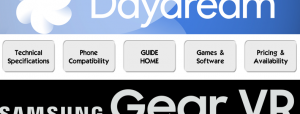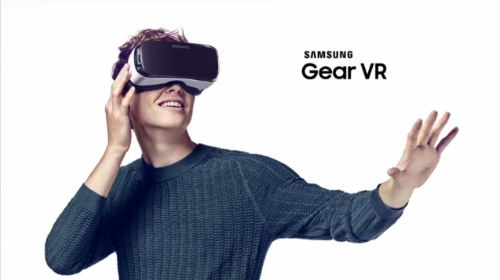Google’s recently announced Daydream platform looks set to go head-to-head with Samsung’s Gear VR, but in reality the two head-mounted displays (HMDs) are very different. VRFocus has dug in deep on both of the devices to present you with the reality of what these two different mobile virtual reality (VR) platforms can and will offer to help you decide which is the right choice for your investment of time and money.
Mobile VR is the Future
Mobile VR platforms are widely considered to be the future of VR. An untethered solution that while at present may not be capable of delivering the same level of immersion or presence as their desktop counterparts, the HMDs are only limited by the smartphone technology powering them. This technology is of course improving far more rapidly than desktop machines, and it’s only a matter of time until smartphone hardware can offer the same level of presentation that we are currently able to experience on the Oculus Rift, HTC Vive and PlayStation VR.
The evidence for this runs throughout the VR industry, with videogame design luminaries such as John Carmack, CTO at Oculus VR, openly committed to the progression of mobile VR over that of desktop platforms. His openness reflects that stated above, with mobile VR more than likely to eventually eclipse desktop performance: “We will continue to need mobile systems that get faster and faster with more and more cores and wider and wider GPUs. It’s fine right now if you want the short 15-minute experiences that offer a lot of interesting stuff. But looking ahead, we want people to be in VR for hours at a time. There are some significant challenges that we have to face there.”

Elsewhere, support for mobile VR from a software development level is increasing rapidly. Upon the launch of the initial Gear VR Innovator’s Edition back in 2014 it was left to Unity 5 to be the only commercial videogame engine supporting the platform, and even then it didn’t offer a native solution. Fast forward two years and we have three videogame engines – Unity 5, Unreal Engine 4 and CryEngine V – all supporting mobile VR development natively, and it’s only going to get better from here-on-out. At the announcement of Google Daydream last week both Epic Games and Unity Technologies committed to supporting development for the platform, with Unreal Engine 4 already capable of doing so, and furthermore offering support for a new graphics API, Khronos’ Vulkan, in the coming months to allow for greater visual fidelity on the same existing smartphone handsets.
Of course, all of this goes on behind the scenes. While it’s important to note in these early days of modern VR, it doesn’t necessarily equate to having a better experience. There are many factors which do however, and each one of them is discussed in detail on the relative breakdown pages below. Whether you’re limited by your choice of smartphone or are looking for a specific mobile VR experience, VRFocus has made it easy to decide whether it’s Google Daydream or Samsung Gear VR that should be your first choice.
















